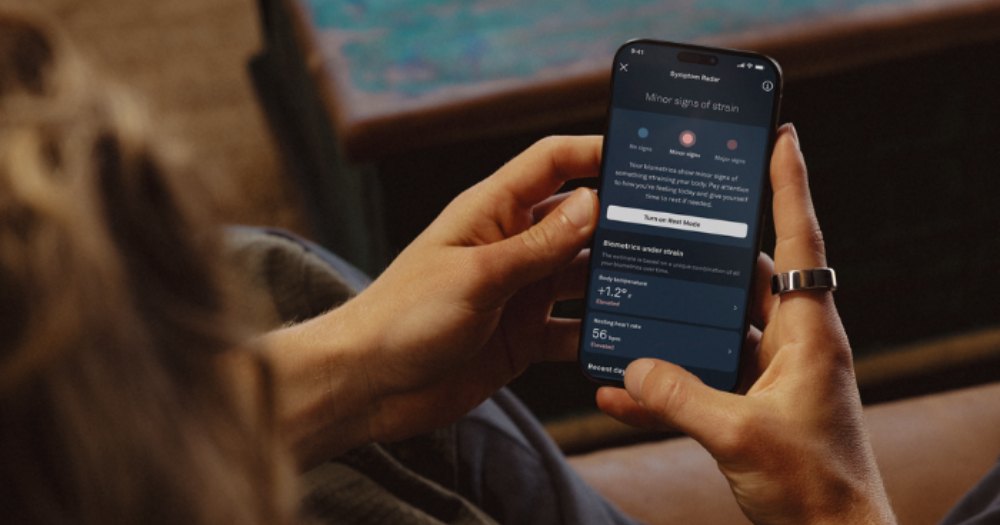Oura smart rings get the Symptom Radar feature

Smart ring maker Oura has recently announced Symptom Radar, a new feature for Oura Ring Gen3 and Gen4 members to revolutionize how users monitor their health. Designed to detect early signs of strain on your body, this tool empowers you to take proactive steps toward recovery and wellness.
Developed over years of research and user feedback, Symptom Radar is presented as a significant step forward in health tracking and prevention.
How does it work?
Symptom Radar leverages Oura's advanced tracking capabilities, analyzing over 40 biometrics — including skin temperature, respiratory rate, resting heart rate, heart rate variability, and inactive time. It evaluates these metrics over time — alongside demographic data such as age — to identify deviations that signal strain on the body.
Specifically, the feature provides a three-level estimate to categorize signs of strain:
- No signs: Biometrics indicate no notable strain.
- Minor signs: Subtle deviations suggest potential strain.
- Major signs: Significant deviations indicate the need for rest and recovery.
For deeper insights, the app highlights specific biometrics deviating from your baseline. If necessary, users can activate Rest Mode, pausing activity goals to focus on restorative rest while Symptom Radar continues monitoring in the background.
In other words, Symptom Radar helps users focus on recovery, not step counts.
Why does it matter?
Symptom Radar could be a game-changer for proactive health management. By detecting subtle changes before noticeable symptoms appear, users can rest and recover earlier — potentially boosting immune responses and preventing illness. Unlike conventional health monitoring, which often reacts to symptoms, Symptom Radar enables users to act preventively.
The feature is particularly useful for individuals seeking to maintain peak performance or balance demanding lifestyles. However, it comes with some limitations, such as reduced accuracy for users with pre-existing medical conditions or during pregnancy.
The context
The roots of Symptom Radar trace back to 2020, during the University of California, San Francisco's TemPredict study, which informed the initial algorithm. Oura built upon these foundations with the Health Risk Management (HRM) platform for enterprise clients, focusing on workforce safety.
In April 2024, Symptom Radar debuted in Oura Labs, inviting members to test the feature and provide feedback. After months of iteration based on user insights, Oura refined the feature for its full release.
Symptom Radar underscores the evolution of wearable health technology, blending advanced data science with user-driven design to deliver actionable insights that empower individuals to lead healthier lives. Love it!
💡Did you know?
You can take your DHArab experience to the next level with our Premium Membership.👉 Click here to learn more
🛠️Featured tool
 Easy-Peasy
Easy-Peasy
An all-in-one AI tool offering the ability to build no-code AI Bots, create articles & social media posts, convert text into natural speech in 40+ languages, create and edit images, generate videos, and more.
👉 Click here to learn more


